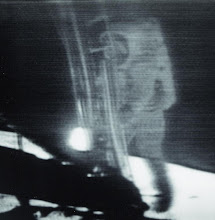
Damn if Barry Hannah didn't go and die last Monday. It would not be easy for me to tell you how much I enjoyed his writing, and for more than 30 years. Once while visiting Oxford, Mississippi I told my hosts I wanted to meet him. They said I could, at a bar, but advised against it, as he might bridle. He came to Atlanta once to give a reading at a university, and that time I did go, and sat and listened but decided not to go up to talk with him afterward. So I never said hello or got into a fight with him. There are eight books by him on my shelves, more than any other author by far.
The New York Times and Vanity Fair both noted his passing with articles.
Here's a part of what Claire Howorth, daughter of the owners of Square Books in Oxford, wrote: "Women, God, lust, race, nature, gay Confederates, good old boys, bad old boys, guns, animals, fishing, fighting, cars, pestilence, surrealism, gritty realism, the future, and the past are tossed together in glorious juxtapositions in Hannah’s writing. Weird, funny, conversational, soulful—it was entirely his own thing, the numerous comparisons to William Faulkner, Flannery O’Connor, and Mark Twain aside."
His stuff wasn't like anybody else's, and what I mean to say is that, as a Southerner and a lover of words, I was proud of him. Try Airships or Ray if you're inclined.
the photo above was taken by Miriam Berkley












